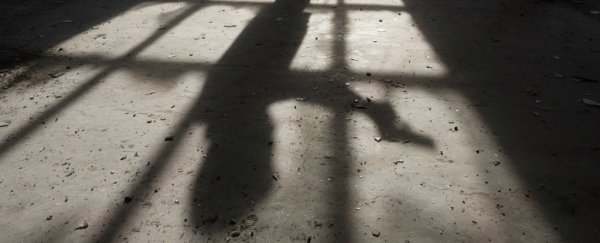The debate over mass shootings in the United States has become highly politicised in recent years, and doctors are desperately trying to reclaim the conversation using data and reason.
By developing a profile of communities where mass shootings have occurred, a trauma research team has now identified four main social factors that may lead to mass shootings.
To be clear, the research only reveals correlations. But if these factors are found to be truly predictive, they could help inform more effective public health policies.
"Traditionally, these shooting incidents get lot of attention because they come into the hospital as trauma," says Stephen Markowiak, a general surgery research fellow at the University of Toledo, Ohio.
"But they really need to be looked at more from a public health perspective as to the types of services we are going to provide for the community and what the implications are for the community."
The data that Markowiak and his team used to create these profiles comes from a wide range of sources, including the FBI, the US Census, the Centers for Disease Control, state gun laws and ten others.
The team only gathered data from shootings with four or more fatalities, excluding shootings with a clear motive, such as robber- or gang-related violence.
All in all, the researchers identified 155 mass shootings from 2005 to 2018, which they compared with 180 measures of social health factors among communities.
"In general, the communities in which these multiple-shooting events have historically happened are much less healthy compared with national averages," concludes Markowiak.
Access to mental health professionals was found to be one of the key indicators. Communities where mental health care needs were not being met had significantly higher risks of mass shootings.
This was especially evident in urban communities. Here, the study found a mismatch between the number of mental health providers and the number of patients needing mental health assistance.
"Looking at our data, the mismatch of mental health providers per capita appears to place more urban communities at risk - greater than the national median of 490 persons per provider," said Markowiak.
"This study certainly draws attention to the consequences of physician shortages nationwide - not so much at the level of service, but at the level of the primary-care physician and mental-health practitioners," he added.
In addition, the closeness of the community was an important factor. The data reveals that those communities with a greater number of daily social interactions were less likely to suffer mass shootings.
"If you look at communities where these events occurred, the average individual had 10.5 to 11 people that they commonly associate with compared with an average of 13 or so close associations in communities where they didn't occur," says Markowiak.
Of course, money has a role to play here as well. Communities with high levels of income inequality, higher housing costs and higher incidences of overcrowding and lack of utilities were key indicators of mass shootings.
"If we focus on making our communities healthier places where people have access to doctors and healthy spaces, and we restore a sense of community, then I think our project indicates we may be less likely to see these mass shooting events occurring," says Markowiak.
The correlation with gun control laws was trickier to determine. At first, the researchers found that communities with stricter gun laws had a 53 percent higher risk of mass shootings.
"Our data agrees that stricter gun laws are associated with less overall violent crimes," said Markowiak. "It's just that these multiple-shooting events appear to be an exception to that rule."
But once they adjusted for other community factors, like the urban setting, population density, and the amount of men of a certain age, they found that "state gun laws do have a correlation with a lower incidence of these mass shooting events," as Markowiak told Peter Hess at Inverse.
Gun background checks on mental health and restrictions on open carry of firearms were especially correlated with a reduction in mass shootings.
"You should definitely want to live in a community that has stronger gun laws," Markowiak told Inverse.
Overall, the findings suggest that a shortage of mental health professionals, a lack of social opportunities, higher rates of income inequality, and a lack of gun control laws may be contributing to the high number of mass shootings in the US.
It's important to reiterate that this study is not meant to be conclusive. Instead, it's presented as a launch pad for future gun violence research, which has been historically restricted in the US.
"We just wanted to see where the data was going to take us," Markowiak says. "That's what led to some of the more surprising findings."
This study was presented at the American College of Surgeons Clinical Congress 2018.
Editor's note (6 Aug 2019): Markowiak's statement about state gun laws correlating to lower incidence of mass shootings was originally hyperlinked to the incorrect source. The error has now been corrected, and an additional quote added to clarify the context of the statement.
